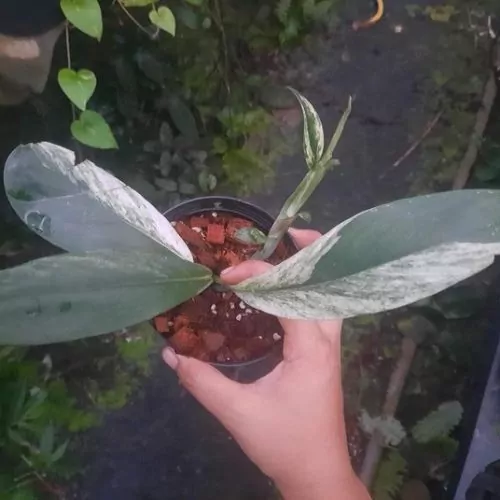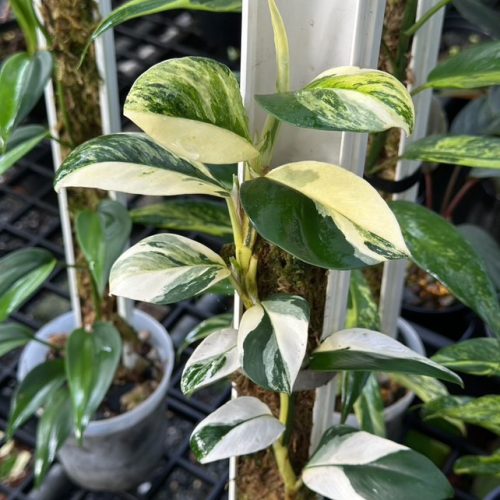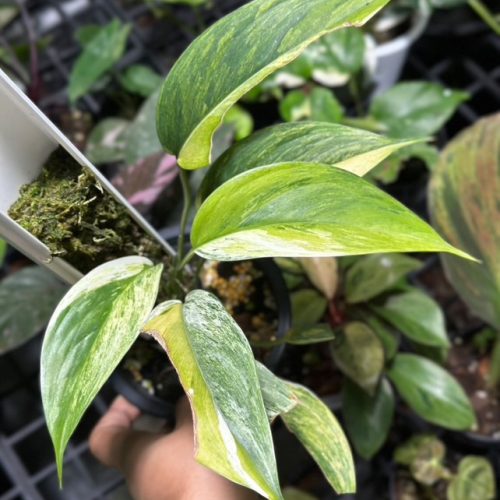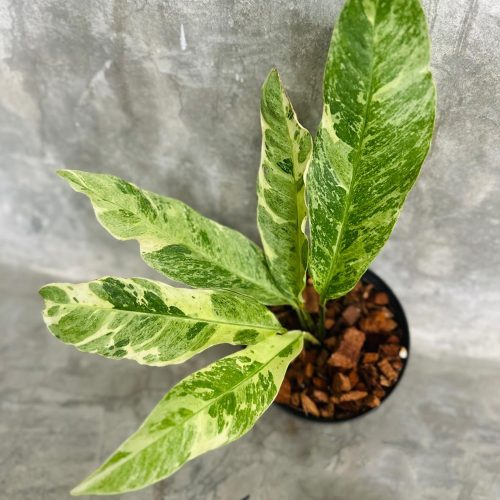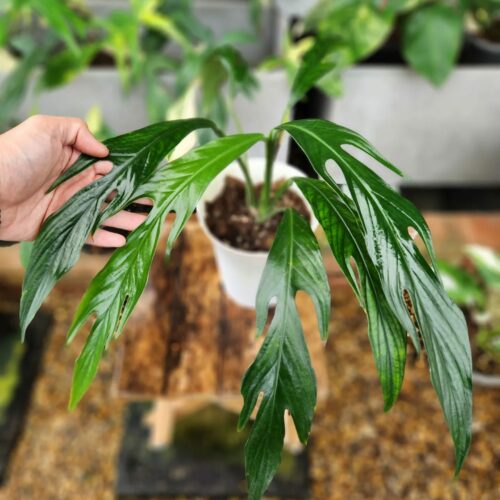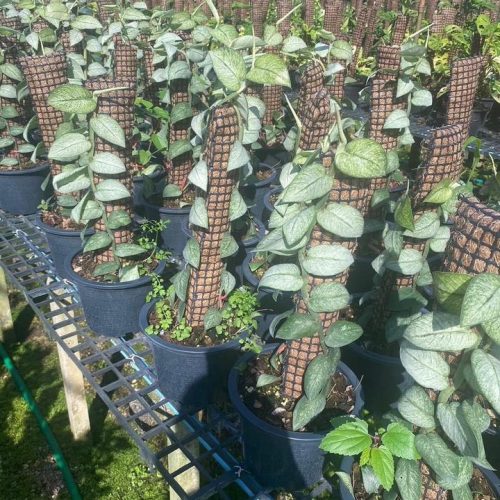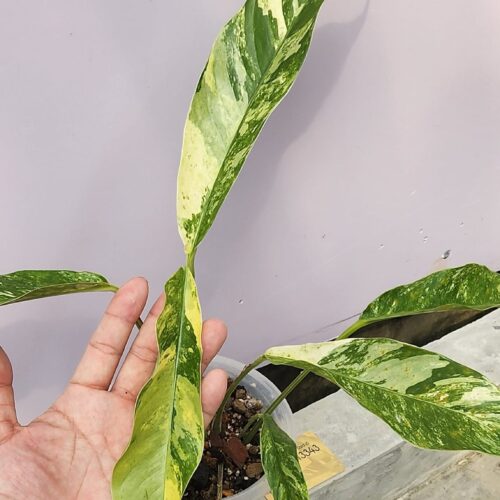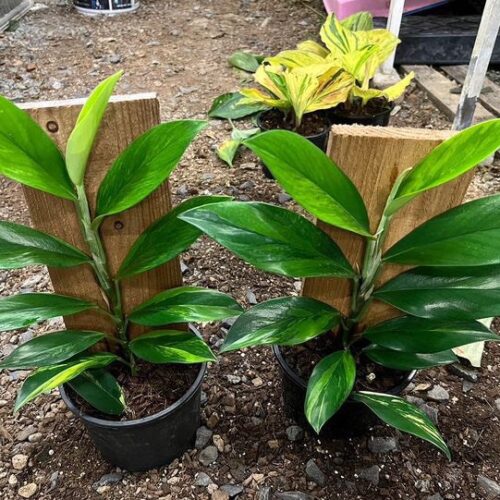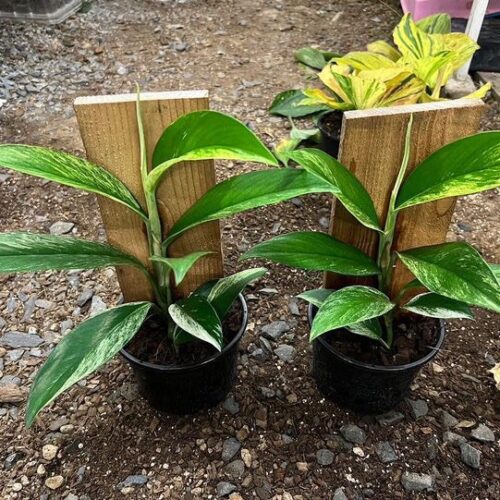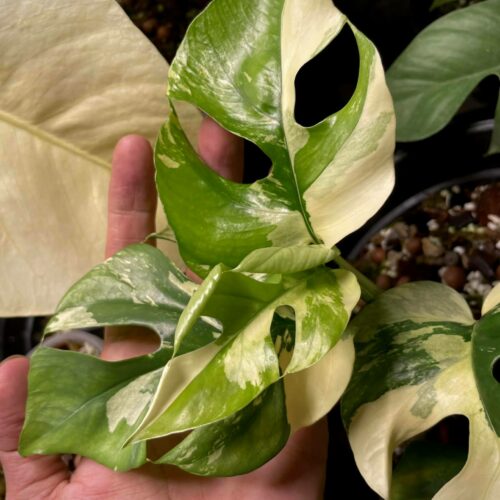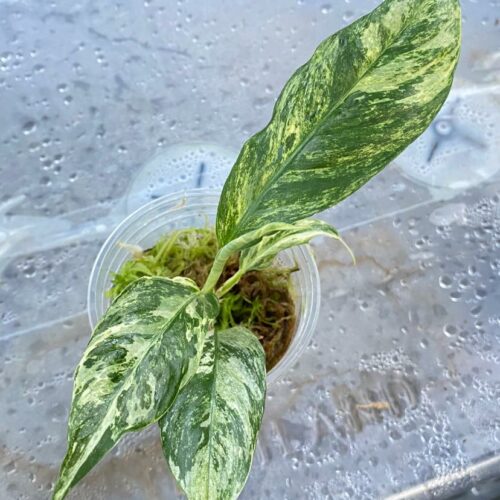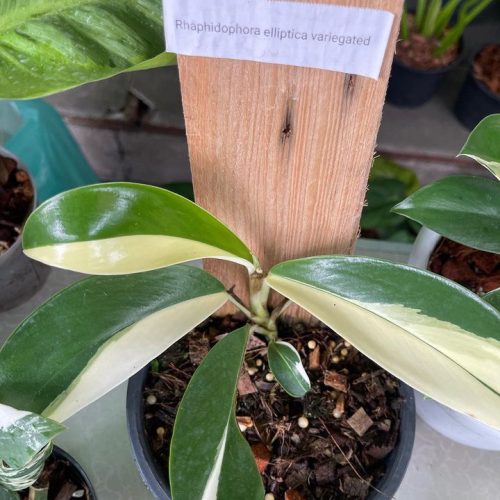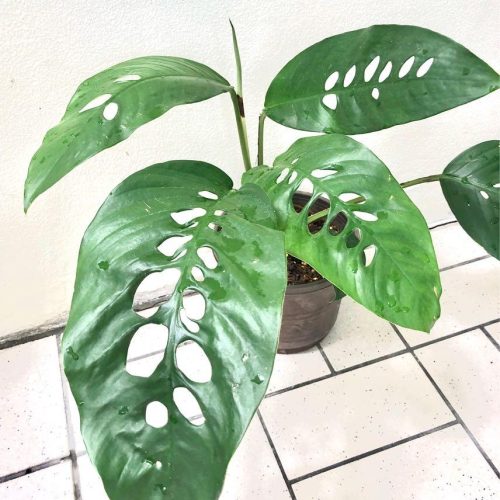The Rhaphidophora Hayi, also known as the Dragon Tail Plant, is a popular indoor vining plant known for its elongated green leaves with white or yellow variegation. The variegated varieties, in particular, make a gorgeous addition to any home with their uniquely colored foliage. However, caring for these tropical beauties can seem intimidating for new plant parents. Read on as we reveal 5 insider secrets to help your Rhaphidophora Hayi Variegated thrive!
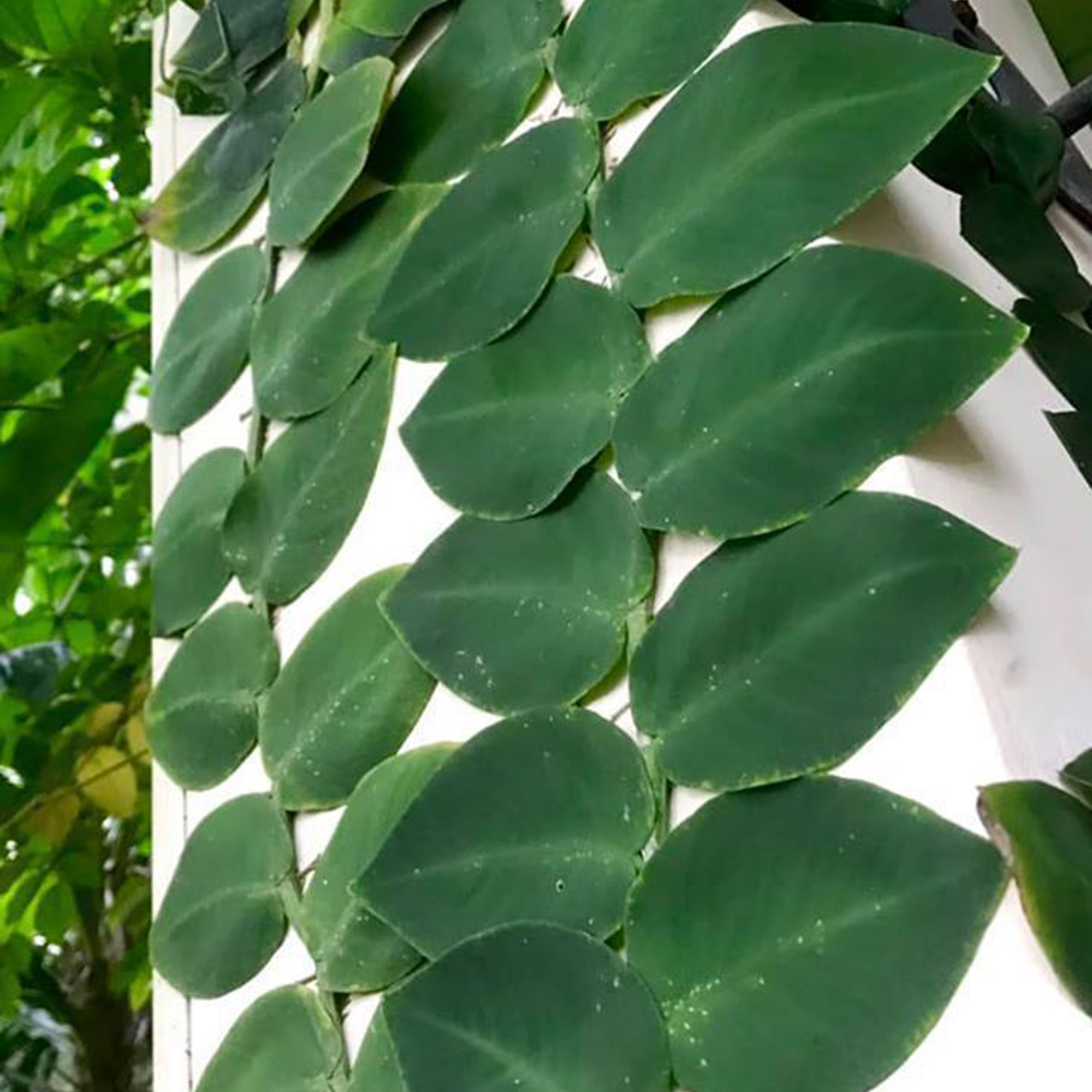
Perfect Potting Mix
Having the right soil is crucial for healthy root development and water retention.
Aeration is Key
Rhaphidophora Hayi Variegated prefers a loose, airy potting mix that won’t easily become waterlogged. The potting substrate should contain:
- Coconut coir or peat moss to help retain some moisture
- Perlite or pumice to keep the soil airy and promote drainage
- Compost or worm castings to provide nutrients
Avoid standard potting soil or anything too dense. The roots need room to breathe!
“To ensure you’re using the best soil for your Rhaphidophora Hayi, check out our detailed guide on 5 best soil types to grow Rhaphidophora at home, which offers insights on the ideal soil composition.”
Fertilizer Options
While not strictly necessary with a nutrient-rich mix, adding a bit of slow-release pellet fertilizer every 2-3 months will fuel growth. Organic options like worm castings or compost are great as well. Just don’t overdo it!

Bright, Indirect Light
While these trailing beauties tolerate lower light than most houseplants, they really thrive with ample bright, indirect sunlight.
Near a Window is Best
A spot near an east or west-facing window is ideal. Some gentle morning or late afternoon sun highlights the gorgeous variegation without scorching the leaves. Just be sure to filter any intense direct rays!
Light Supplements
If window space is limited, consider supplementing with a grow light for a few hours per day. Full spectrum LED grow lights work beautifully to keep your Rhaphidophora vibrant and variegated when natural light is scarce.
“For more information on how to provide the perfect lighting conditions for your Rhaphidophora, refer to our comprehensive document, Discover the Fascinating World of Rhaphidophora Varieties.”
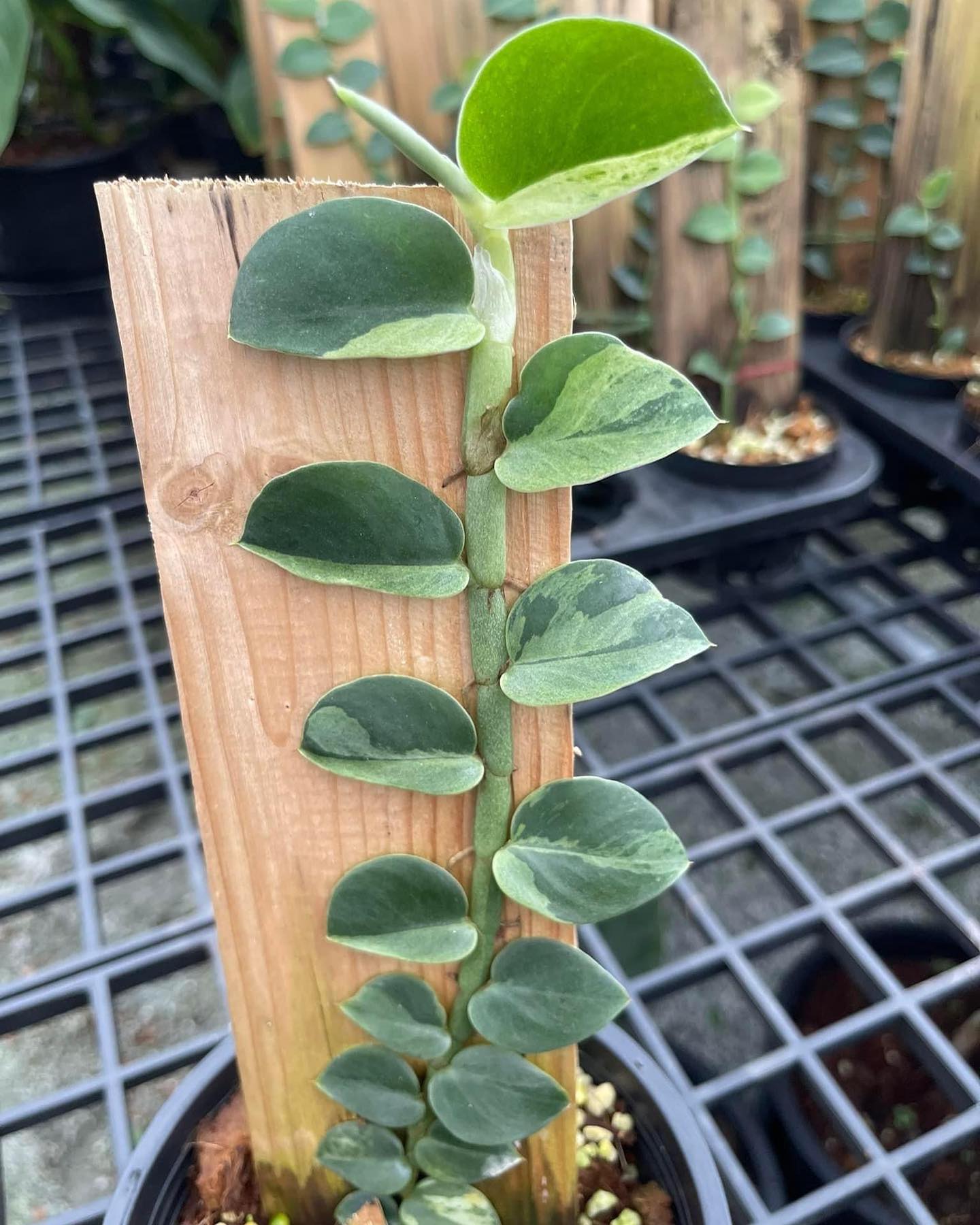
Shop Now and Bring the Beauty of Nature Home Today!”
Consistent Temperature & Humidity
Native to tropical Asian rainforests, these jungle vines appreciate warm, humid conditions year-round.
Ideal Temperature Range
Aim to keep their space around 70-80°F. While they can tolerate short drops to 50°F, prolonged chill will slow growth and damage leaves.
Boost Humidity
40-60% humidity is perfect! Grouping plants together, using a pebble tray, or investing in a humidifier during dry winter months all help recreate their lush, tropical environment.
Watering Technique Matters
While Rhaphidophora Hayi Variegated can tolerate occasional neglect, following best practices for watering keeps them thriving.
Allow Soil to Dry Out
Water thoroughly only once the top inch or two of soil has dried. Their succulent stems and leaves adapt to store water when dry.
Always Empty Drainage
After watering, gently tip the pot to empty any pooled drainage from the saucer. Stagnant moisture invites root rot!
“To avoid common watering mistakes, explore our insights in 5 common reasons why your Rhaphidophora leaves are turning yellow, offering practical tips for maintaining the perfect moisture balance.”
Support for Optimal Growth
In their native jungle habitat, these trailing vines can grow quite long and climb high up trees and rock formations. Our homes don’t always offer such vertical spaces…so we must provide support!
Sturdy Stakes
Insert sturdy plant stakes, moss or rattan poles into the potting mix for the vines to latch onto and climb skyward. Trellises also work beautifully to showcase their gorgeous length.
Gentle Guidance
Use soft plant ties or gentle twisting to loosely guide wayward stems back to stakes or supports. Avoid overhandling the fragile stems. Just a gentle nudge in the right direction is plenty.
Where to buy Rhaphidophora Hayi Variegated? Benefits from importing plants from Thailand
- Shipping: Door to door shipping, fast and safe with Dragon Courier
- Biodiversity: Thailand is known for its rich biodiversity, including a wide variety of aroid species. This diversity allows importers to access a broad range of unique and exotic aroid plants.
- Quality and Health of Plants: The suitable climate helps the plants grown here stay healthy and of high quality.
- Cost-Effectiveness: Due to favorable growing conditions and efficient production methods, Thai aroid plants can often be more cost-effective compared to those from other countries.
- Access to Hybrid Varieties: Thai growers are often involved in the development of new hybrid aroid varieties, offering unique plants that may not be available from other sources.
Rhaphidophora species are the most sought after by aroid plant lovers
Conclusion
There you have it folks – the insider secrets that will have your Rhaphidophora Hayi Variegated not just surviving, but positively thriving with lush foliage and vigorous new growth. Following this care guide for light, warmth, humidity, soil, water and support provides everything these gorgeous trailing vines need to bring a spectacular pop of jungly vibrance into your indoor garden. Those incredible elongated leaves with mesmerizing white and yellow variegation will have all your plant-loving friends begging for propagation cuttings! So what are you waiting for? Go grab your own Rhaphidophora Hayi Variegated today and transform your space into an indoor oasis. Happy growing!
“For a broader understanding of the Rhaphidophora species, including Rhaphidophora Hayi, don’t miss our detailed guide, Discover the Fascinating World of Species Rhaphidophora, which provides a wealth of information on this beautiful plant genus.”
FAQ
- What is Rhaphidophora Hayi, and how does it differ from other Rhaphidophora species?
- Rhaphidophora Hayi is a unique tropical plant known for its distinct foliage. It can be distinguished from other Rhaphidophora species by its specific leaf shape and coloration.
- What are the ideal growing conditions for Rhaphidophora Hayi?
- Rhaphidophora Hayi thrives in a warm, humid environment with bright, indirect sunlight. It prefers well-draining soil and regular watering, allowing the soil to dry slightly between waterings.
- How do I propagate Rhaphidophora Hayi?
- You can propagate Rhaphidophora Hayi through stem cuttings. Take a healthy stem cutting with a node and place it in a container with moist soil. Keep it in a warm, humid environment, and roots should develop within a few weeks.
- What are common issues or pests that affect Rhaphidophora Hayi, and how can I address them?
- Common issues include overwatering, which can lead to root rot, and pests like spider mites and mealybugs. To address these problems, ensure proper watering practices and treat any pest infestations promptly with neem oil or insecticidal soap.
- How fast does Rhaphidophora Hayi grow, and how can I encourage growth?
- Rhaphidophora Hayi is a relatively slow-growing plant, but you can encourage growth by providing it with the right conditions. Ensure it receives consistent, bright, indirect light, and feed it with a balanced liquid fertilizer during the growing season. Regularly repotting when it becomes root-bound can also promote growth.

